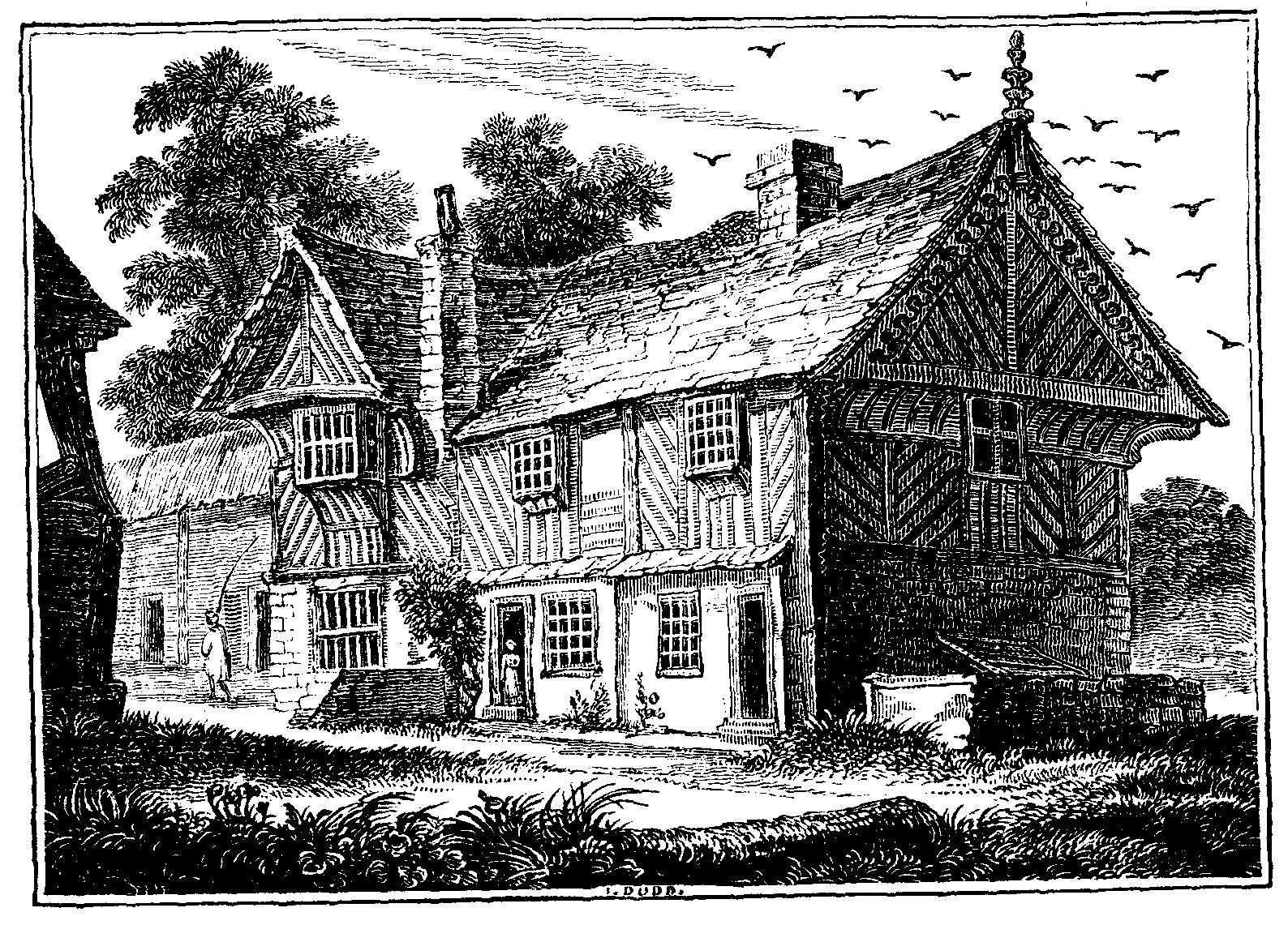and Project Gutenberg Distributed Proofreaders
THE MIRROR
OF
LITERATURE, AMUSEMENT, AND INSTRUCTION.
| Vol. 20. No. 573. | SATURDAY, OCTOBER 27, 1832 | [PRICE 2d. |
OLD HALL, IN DERBYSHIRE.
This picturesque specimen of olden architecture stands upon the NortonLees estate, on the northern verge of Derbyshire upon the adjacentcounty of York; about a mile from Sheffield, and eight miles north ofChesterfield, and but a short distance from Bolsover Castle, picturedin No. 566 of The Mirror. "The estate, in the reign of Henry VII.,was the property of the family of the Blythes of Norton, two of whomarrived at great honours in the church; one of them, John, being theBishop of Salisbury, and the other, Geoffrey, Bishop of Lichfield andCoventry."1 The above was the mansion of the family: itspicturesqueness is of pleasing character; and our inquiry into theprobable age of the structure has naturally enough led us into a fewobservations upon the early domestic architecture of this country. Thesubject is, however, too rife with interesting details for the presentoccasion; so that all we now purpose is by way of reference to thespecimen or illustration before us.
The house at Norton Lees has been supposed by some persons to be asold as the reign of Richard II.; but Mr. Rhodes observes, "that it waserected many years after this period can hardly be doubted." Certainfeatures of resemblance assist its appearance of antiquity, as thewooden framework, which is observable in the oldest specimens ofhouse-building in this country. According to Strutt, the Saxonsusually built their houses of clay, kept together by wooden frames;shortly after the Norman Conquest plaster was intermixed with timber,and subsequently the basement story was made of stone. The upperapartments were so constructed as to project over the lower, andconsiderable ornament both in carved wood and plaster was introducedabout the doors and windows and roof of the building. Nevertheless,timber, with lath and plaster, and thatch for the roofs, constitutedthe chief materials in the dwellings of the English from an earlyperiod till near the close of the fourteenth century and beginning ofthe fifteenth, when bricks began to be used in the better sort ofhouses.2 The mansion before us, as we have seen, is referred to thefirst-mentioned period. Mr. Rhodes, however, observes, "thoughcomposed of stone and wood, it is evident not one of the earlieststructures of this description: it is indeed highly probable that itwas built in the reign of the Seventh or Eighth Henry, but certainlynot sooner. At this period the halls or family mansions of theyeomanry of the country had nearly all the same general character.Previously, but little stone was used in any of them."...
